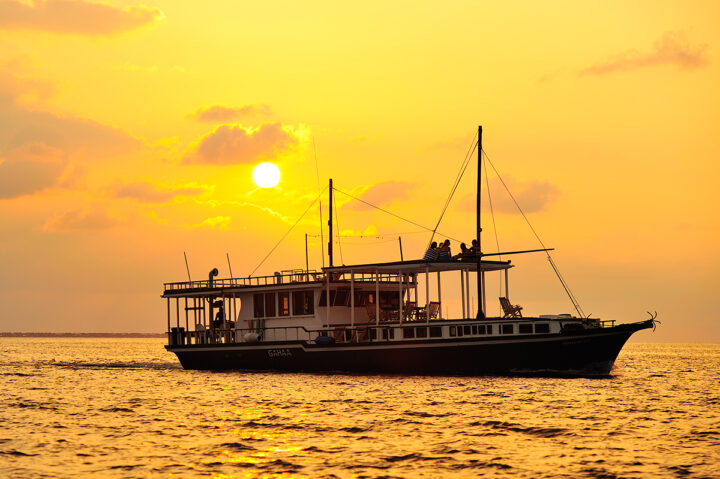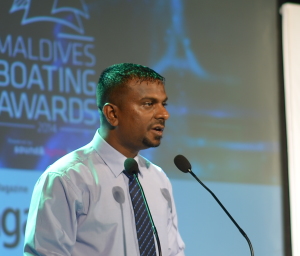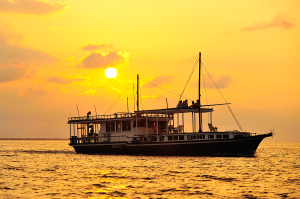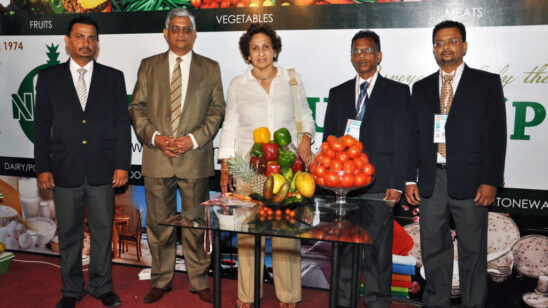
Liveaboard Stories
[vc_row][vc_column width=”1/1″][vc_column_text]Mariyam Athiza Athif[/vc_column_text][/vc_column][/vc_row][vc_row][vc_column width=”1/1″][dt_gap height=”10″][/vc_column][/vc_row][vc_row][vc_column width=”1/2″][vc_column_text]
“Maldives has the largest liveaboard fleet in Asia with more than 120 liveaboards”, says Ismail Hameed, President of the Liveaboard Association of Maldives (LAM). This is rather a huge progression for an industry that started soon after tourism was introduced to the country, by adapting simple fishing boats to accommodate and carry tourists who wanted to dive and cruise in the Maldives.
Established in 1980, Voyages Maldives is one of the first liveaboard operators of the country, and the company’s CEO Aminath Salah describes the experiences had by the tourists on the initial liveaboards as “more of a camping trip” since those early vessels lacked some very basic facilities such as toilets and proper power supply.

“What the tourists require as basic has changed over the years”, says Aminath Salah. “Before, if they had a good meal and a place to sleep, they were happy customers. Now they are expecting more when it comes to the service side of things. Our customers are not overly luxurious but they do like to have their own rooms and privacy”. She also noted how running the operation itself had changed over the years. According to her, when the company started, everything was done in-house, and this included a range of tasks such as taking the supplies to the boat and even providing laundry services, which in comparison, is now taken care of by specialized departments or by outsourcing. “At that time there were not many service providers providing specialized services. So whoever owned the boat did everything on their own”, she says.
Now, even the most basic liveaboards have attached toilets, and the fans that used to be kept inside the guest rooms have been replaced by air conditioners. These guest rooms also now come with amenities such as hot and cold water. And this is not all. The Maldivian liveaboard industry has over the years evolved and expanded to include some very luxurious vessels in its fleet. “Today there are wooden and fibre glass liveaboards catering to billionaire clients, and 70 to 80 feet surfing and fishing charters offering affordable trips to budget and middle-range travellers”, says LAM’s President, Ismail Hameed.
Aminath Salah noted one important thing that has remained the same over the years amidst all the changes and improvements that took place. “We have found that our customers still want that authentic Maldivian experience. They like the fact that they get to go to a lot of uninhabited islands and also see the local way of life. So the itineraries and tours have not really changed much since we started our operations in the early 1980’s. It’s the facilities on the boat that have changed to meet the changing customer demands and expectations”, she says.
According to Ismail Hameed, liveaboards offer tourists the opportunity to explore more locations and experience more of the Maldivian culture. And according to Aminath Salah, the liveaboard sector is quite an important part of the Maldivian tourism industry. “Even now, there’s a huge gap between the types of services available to the tourists who want to travel in the Maldives. There is no middle sort of level, so to capture that market it’s important to have the liveaboard businesses”, she says. According to her, most of the tourists who choose liveaboards do not expect a five star accommodation or service and there are still many more potential customers all over the world who can be introduced to the Maldivian liveaboard experience.
[/vc_column_text][/vc_column][vc_column width=”1/2″][vc_column_text]
Aminath Salah and Ismail Hameed both describe safety as the most crucial aspect of running a liveaboard operation. According to Ismail Hameed, LAM conducted a special safety and security training programme for crew members of liveaboard vessels earlier this year with the help of the MNDF Coast Guard. The goal of this training programme was to enhance awareness regarding matters of safety and emergency practices. “After safety I would say the most crucial thing would be truthfulness and to provide the tourists with what has been promised”, says Aminath Salah. “For Voyages the authenticity is quite important. Even with the newer boats we want to keep the Maldivian style in the exterior of the boat as well as the interior. We really want to focus on providing a total Maldivian experience, to the extent possible with Maldivian crew and food too”, she adds.

One of the main challenges faced by the Maldivian liveaboard industry is the lack of a designated harbour. “The Industry has survived for more than 4 decades without a proper harbour or a marina, hence it is still the biggest challenge”, says Ismail Hameed. According to him, the government has allocated a location at Dhiyaneru lagoon, next to Aarah, to be developed as a special harbour for liveaboards and the industry is looking forward to the day on which this harbour would become a reality. “The second challenge is crew training and developing an internationally recognized and certified set of crews”, says Ismail Hameed. “These crews will not only be qualified to work here in the Maldives, but they will also have the opportunity to work on international yachts”.
“Considering the fact that the liveaboard businesses don’t have a proper harbour, doesn’t have many exemptions to taxes and concession some of the other industries are privileged with, it is doing well. If the industry can get just a little help, such as a safe harbour for the boats and also proper picnic islands, the industry could go a long way”, says Aminath Salah. She also noted that although there are a lot of people with the capability of getting into the liveaboard business, they are reluctant to do so due to such obstacles. “I think it would be very good for the Maldivian economy if more Maldivians are encouraged to get involved in liveaboard industry she says.
“I think the demand is still there for the liveaboard business, specially now that the whole of Maldives is open for Tourism, and with the work that LAM is doing, there is a brighter future for the industry”, says Aminath Salah. LAM since being established in 2007 has been functioning as the collective voice of the industry in order to promote, advocate and develop the liveaboard sector. “Today, LAM consists of more than 80% of the industry as its members”, says Ismail Hameed. According to him, the association has raised several key issues with relevant authorities and has been most of the time successful in resolving them by establishing proper dialogues. In addition to conducting annual crew training programmes and participating in major travel events, the association also issues an annual publication; Liveaboards of Maldives, which presents information regarding the industry along with a catalogue of vessels. This year, LAM also introduced the first marine industry festival; Maldives Marine Expo and has also formed a trust fund together with the Environment Protection Agency (EPA) and other industry stake holders to manage the Marine Protected Areas identified by the EPA.
[/vc_column_text][/vc_column][/vc_row]




